Drive AI business outcomes with Verint IVA, now
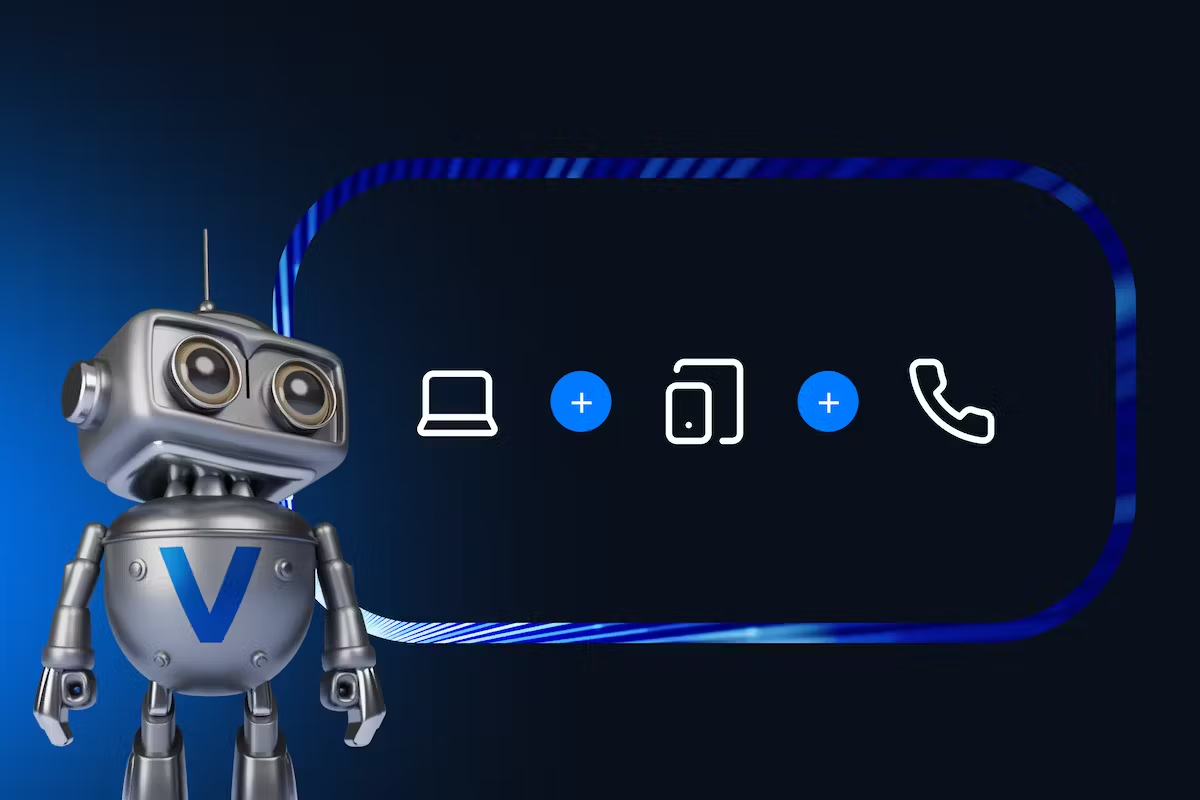
Deliver personalized, self-service customer experiences with Verint IVA Voice
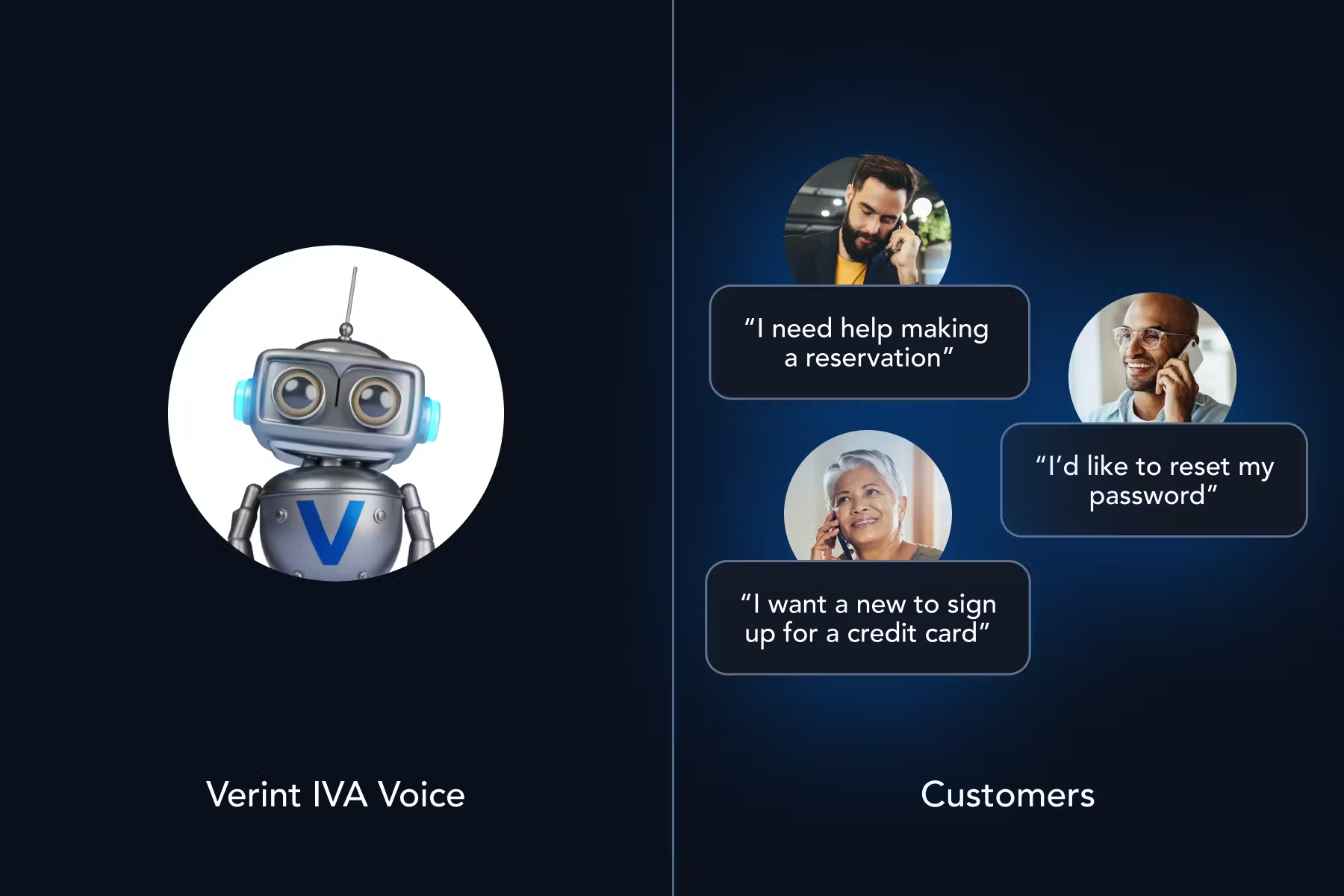
How BarkBox Uses AI to Contain 30% of Customer Interactions

Low effort deployment. Immediate outcomes.
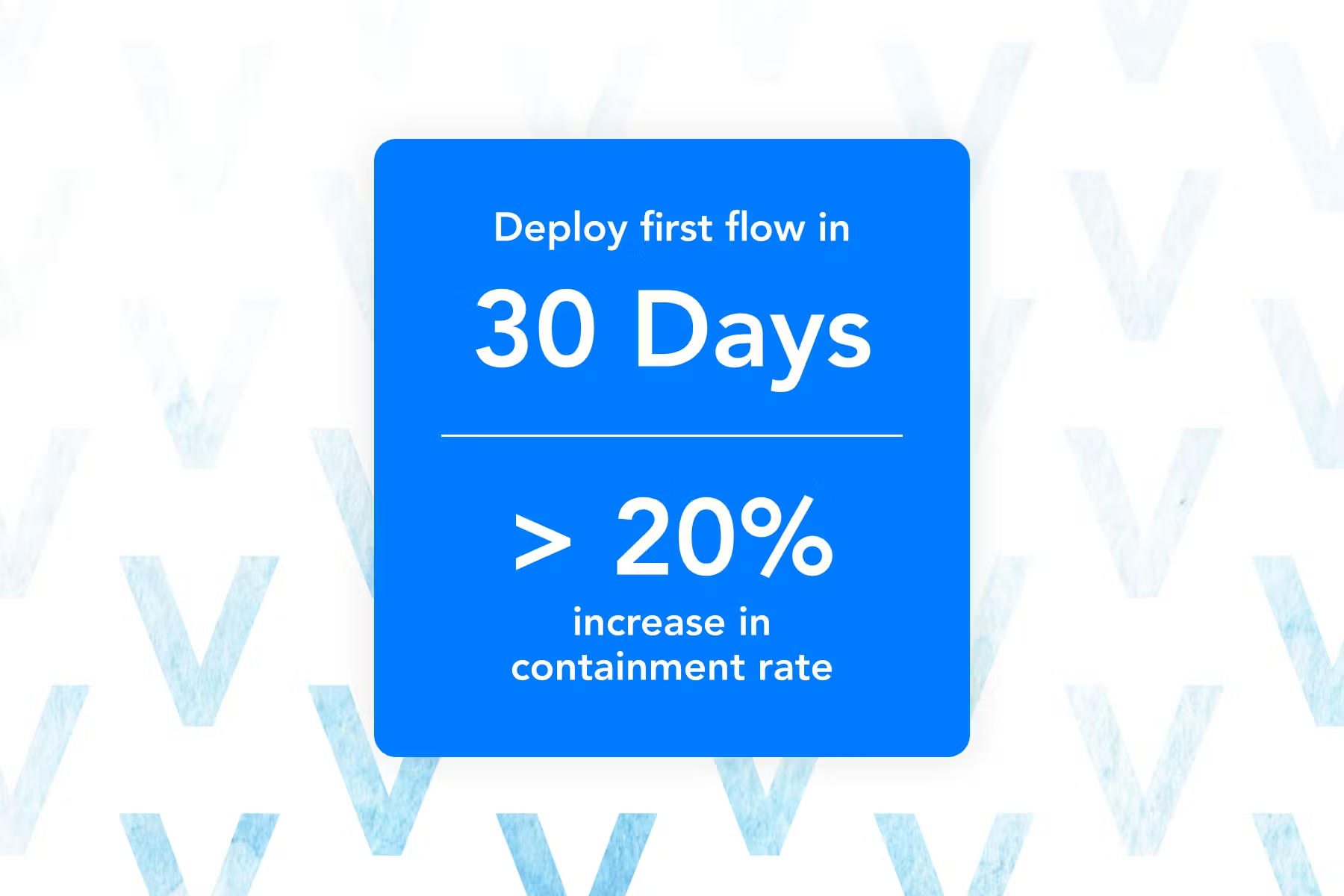
Discover How AI is Changing Self-Service
Brands using AI have better first contact resolution, improved containment rates and are much more confident in their ability to meet future customer expectations.
Read the full report to discover how brands are deploying AI for self-service and their plans for further investment.
Read the Report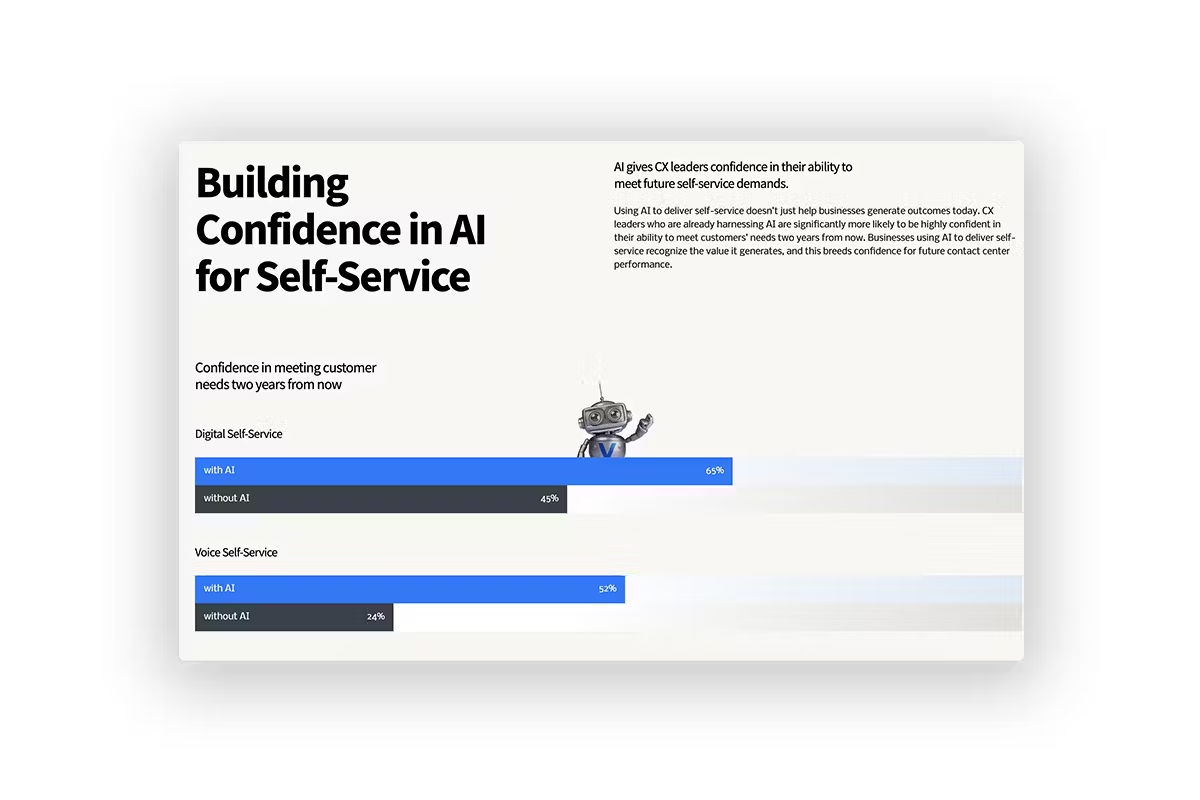
Drive AI business outcomes now with Verint specialized bots
-
Smart Transfer Bot
From the moment an interaction begins, the Smart Transfer Bot ensures the next step is the right step – based on context gathered from multiple sources in real time – so the right outcome is delivered for any interaction (i.e. a callback, an SMS, live chat etc.). Transferring interactions with full context reduces each assisted service call by one minute and can increase agent capacity by 20%.
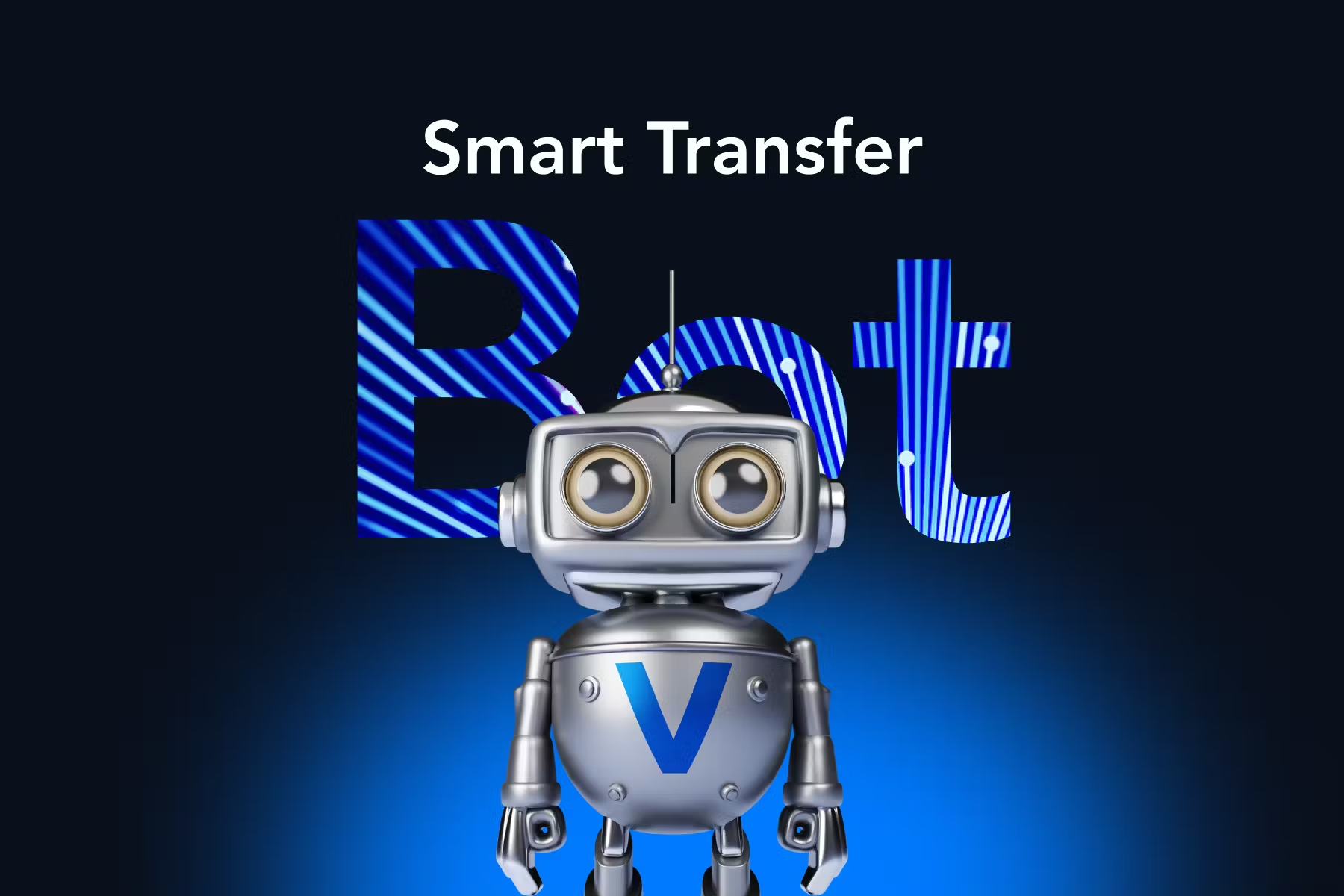
-
Intent Discovery Bot
The Verint Intent Discovery Bot puts AI to work to quickly cut through the noise to uncover what your customers truly want and need. By identifying high-value customer intents from your engagement data in voice or digital channels – including call recording transcripts, email, chats, support tickets, and more — the bot immediately helps to improve CX automation.

Verint ranks as Leader in Opus Research Conversational AI Intelliview Report
In the Opus Research 2023 Conversational AI Intelliview Report and Decision Makers’ Guide to Enterprise Intelligent Assistants, Verint’s® Intelligent Virtual Assistant (IVA)™ solution received top scores and is positioned as the leader for product completeness, flexibility and strategic potential among the other providers evaluated.
Read the Report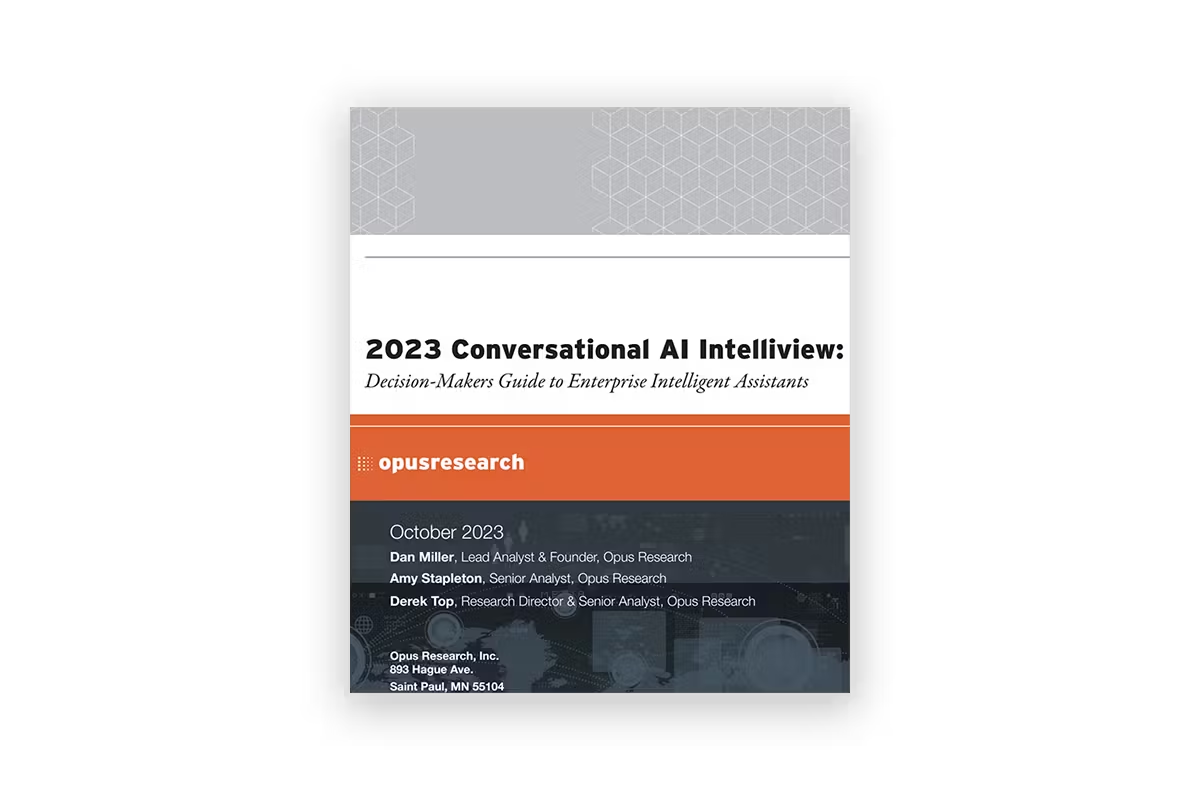
Verint IVA delivers differentiated capabilities
Rapid deployment across channels on an enterprise scale
- Verint IVA delivers a low-code bot orchestration and management environment to design, train, test, deploy, and fine-tune multilingual virtual assistants for voice and digital channels.
- Easily create non-linear and multi-intent conversations, identify high value intents, train AI models, and author responses in conversational flows, all of which can be further customized with a pro-code option.
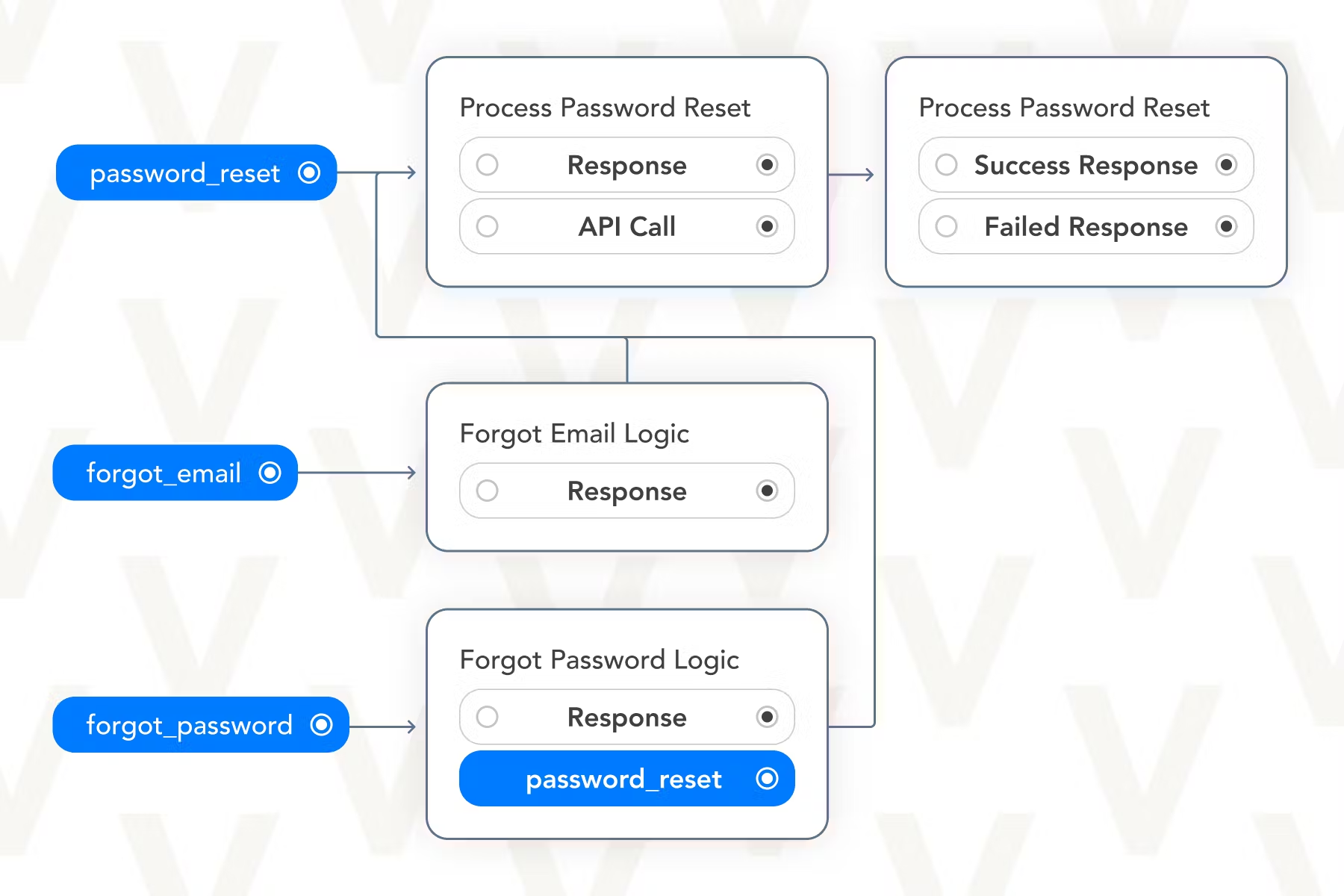
Built on years of domain-specific and industry data
- The latest AI models are trained on decades of rich customer engagement data, ensuring brands can deliver automated, industry-specific experiences from day one. Verint IVA also leverages your existing knowledge resources to ensure accuracy.
- Verint IVA offers pre-packaged, industry specific NLU models to jump start your IVA efforts. Backed by a world-class dataset, these models detect highly accurate end user intentions and extract entities to generate personalized, intelligent responses.
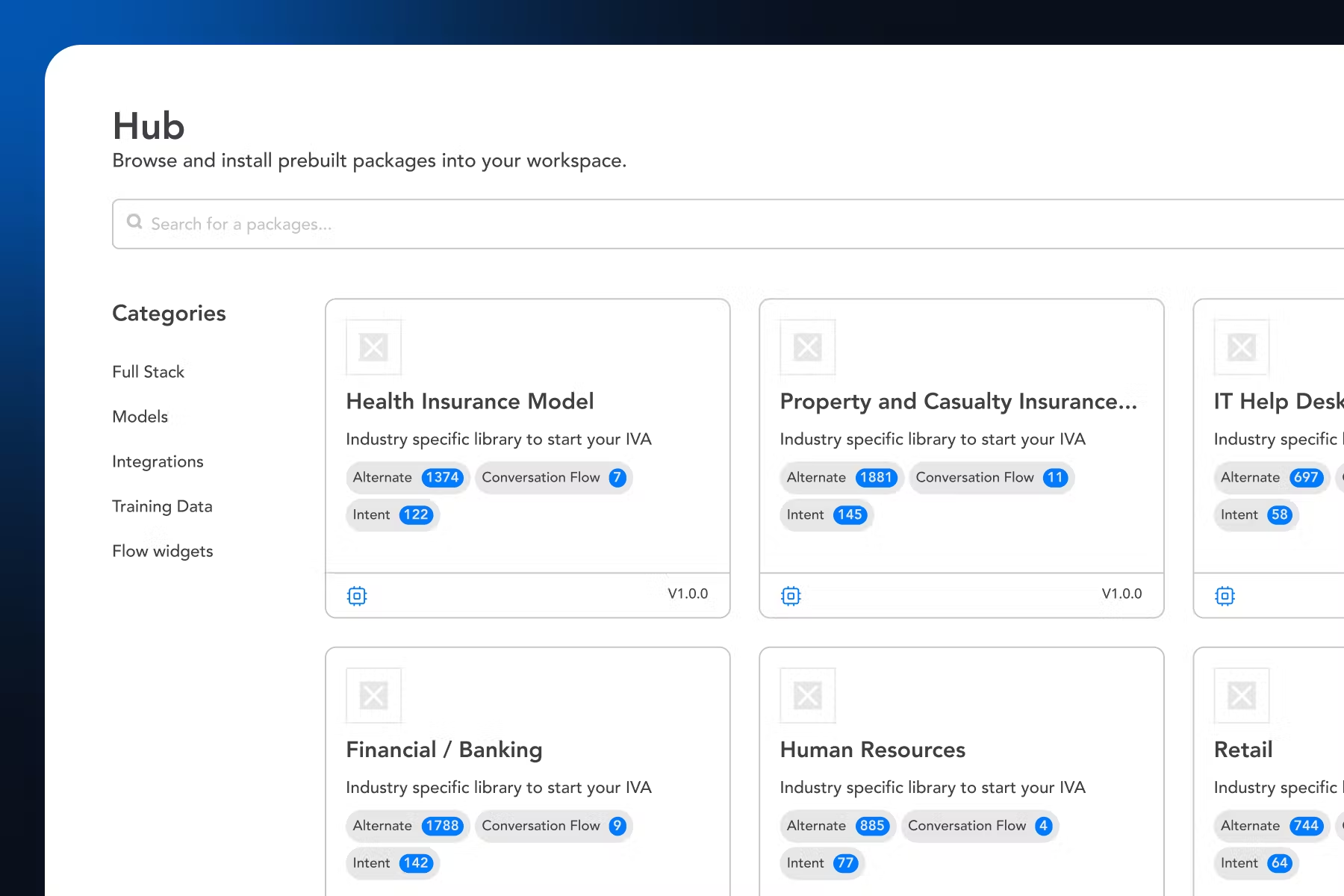
Future-proofed investment through an LLM agnostic approach
- Incorporates commercial and third-party models, including generative AI and large language models (LLMs) so you can test and fine-tune bots in a unified environment.
- NLU and AI models are also continuously trained on a brand’s unique, new customer engagement data sets to discover emerging intents and drive up-to-the-minute CX automation opportunities.
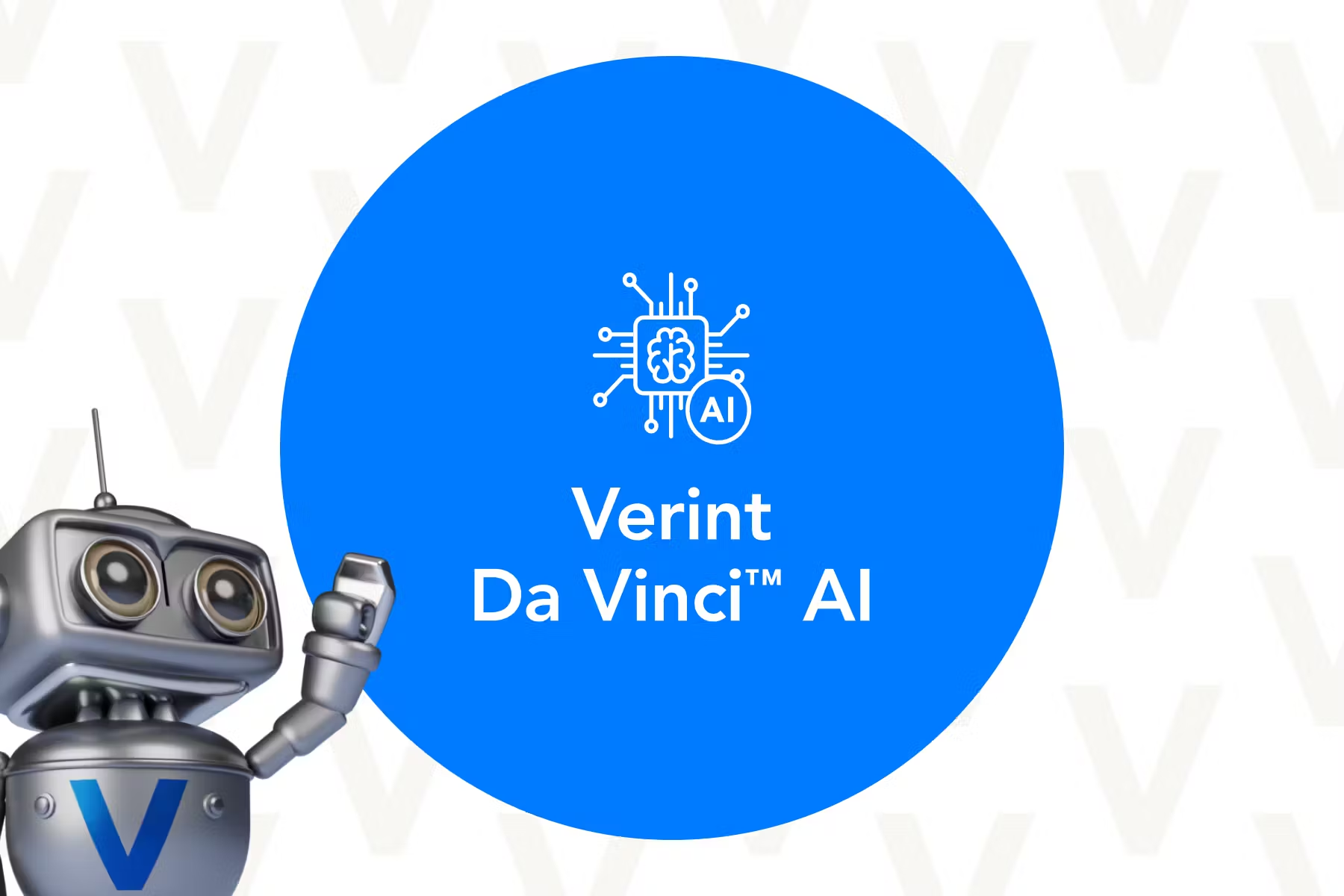
Continuous improvement to virtual assistant performance
- Easily customizable dashboards and analytics about users, conversations, and performance so you can always see how your IVA is performing.
- Helps conversation designers see the entire user journey and behavior, usage and containment metrics, intent identification and failed tasks to provide visibility into areas of improvement.
- Works within your existing CX ecosystem so you can keep the platforms you’re already using while also benefiting from the power of Verint IVA.
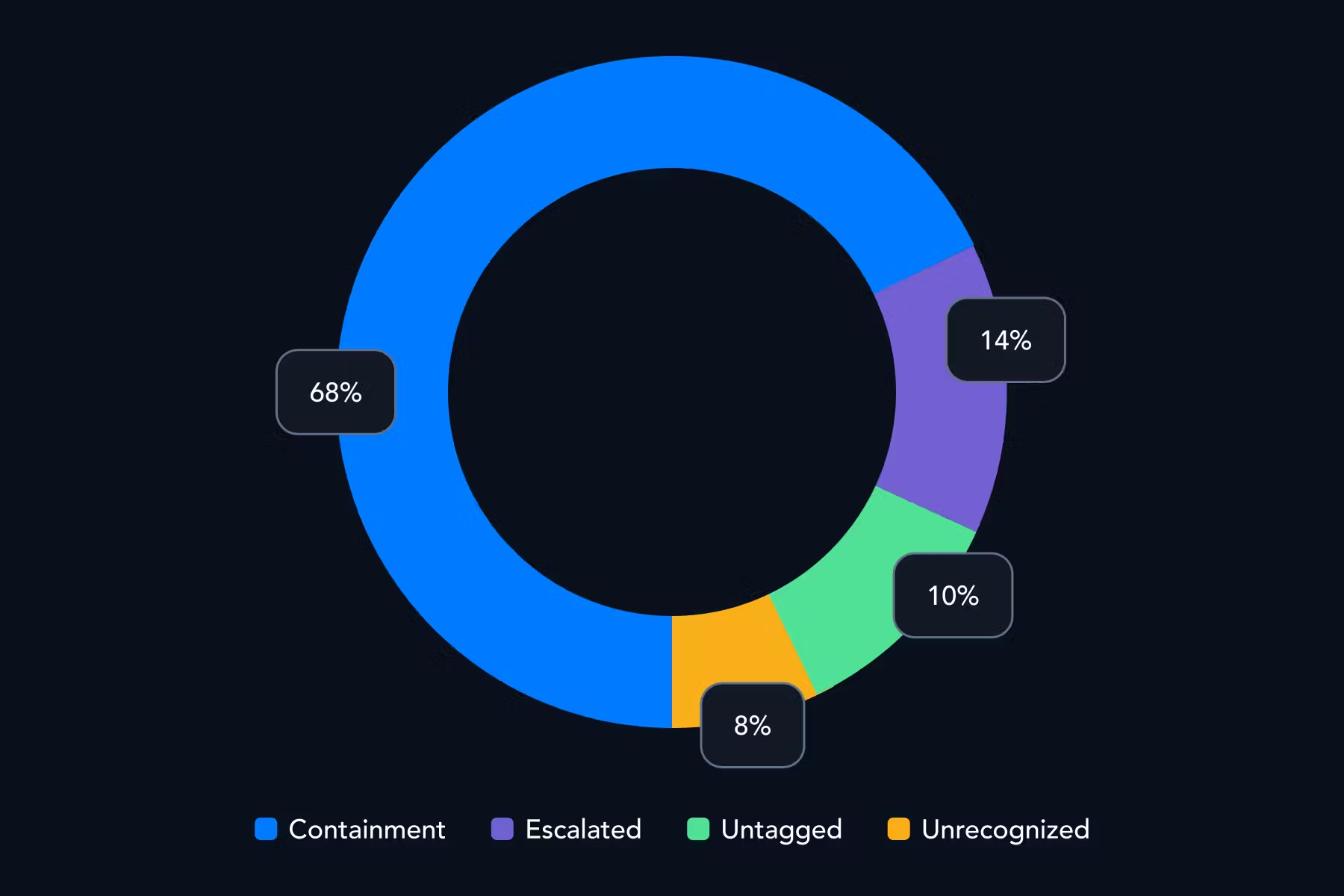
Solutions powered by Verint IVA
Recommended Verint IVA resources
Frequently asked questions about Intelligent Virtual Assistant (IVA)
An Intelligent Virtual Assistant is an AI-driven software agent that uses natural language processing (NLP) and natural language understanding (NLU) models to interact with customers in a human-like manner. It can answer questions and help users 24/7 through chat or voice, providing instant support without waiting for a live agent. By handling routine inquiries and tasks – often with generative AI and agentic AI — an IVA delivers faster resolutions and consistent service, which improves customer satisfaction while allowing human agents to focus on more complex issues.
The difference between an IVA and a simple chatbot comes down to sophistication and flexibility. Basic chatbots often follow preset scripts and only respond to specific keywords, which means they can fail if a customer’s question isn’t accurately phrased. An AI-powered virtual assistant, by contrast, understands context and intent using machine learning and NLP. It can handle complex, multi-step conversations – asking clarifying questions, offering personalized answers, and even gathering info to seamlessly hand off to a live agent if needed. An advanced intelligent virtual assistant can also use generative AI to find information from a range of approved knowledge sources. In short, IVAs are more conversational and capable than traditional rule-based chatbots.
IVAs greatly enhance the customer experience by providing fast, convenient self-service. They are available 24/7, so customers can get help any time without waiting on hold. This immediacy reduces frustration – in fact, 84% of consumers prefer to do business with companies that offer easy self-service support. A well-designed IVA can greet users by name, remember context from prior interactions, and give consistent answers, all of which boosts customer satisfaction and loyalty. IVAs often go far beyond just providing answers, though. Today’s IVAs can provide actionable resolutions for a customer, like scheduling an appointment, checking a bank account balance, or requesting insurance documents, for example. By resolving issues quickly on the first contact, virtual assistants create a low-effort experience that today’s customers appreciate.
Yes – a major advantage of intelligent virtual assistants is their ability to offload routine work from contact center agents. By automating frequently asked questions and simple tasks, IVAs can contain a large portion of interactions that would otherwise go to agents. (Many organizations report containment rates ranging from 30% up to 80+% with a good IVA.) This means lower call/chat volumes for your team, shorter queues, and ultimately reduced operational costs. For example, companies using Verint’s IVA have automated millions of customer interactions – one saved about $10 million by handling inquiries with AI instead of live staff. Additionally, by handling tier-1 issues, the IVA frees human agents to spend time on higher-value or complex customer needs, improving overall efficiency.
Implementing an IVA is easier than many expect. Modern AI virtual assistant platforms offer quick deployment options and integration tools. For instance, Verint’s IVA can be deployed alongside your existing IVR system – you don’t need to “rip and replace” anything. Many companies start with a small use-case (like one call flow or a few common chatbot intents) and can go live in around a month. Because today’s IVAs often come with low-code design interfaces and pre-built components, you can gradually expand automation at your own pace. In short, you can add an IVA to your customer service stack with minimal disruption and see results quickly. Today’s intelligent virtual assistants also can easily plug into third-party large language models (LLMs) for optimal performance.
A good IVA is smart about its limits. It will attempt to understand the customer’s request using AI and even ask follow-up questions if needed. If the query is too complex or outside its scope (for example, a sensitive account issue), the IVA will automatically escalate to a human agent. Advanced IVAs ensure a seamless handoff by transferring the conversation context to the agent. This means the customer doesn’t have to repeat information – the agent can see what the virtual assistant and customer discussed. By recognizing when to step back and involving a person at the right time, IVAs make sure customers get accurate help on complicated issues without frustration.
Yes, most customers are open to AI-driven help, especially if it saves them time. Studies show that nearly 80% of consumers would speak with a chatbot or virtual assistant to avoid waiting on hold for an agent. The key is that the virtual assistant must be well-designed to truly help the customer. When an IVA provides quick answers and solves the problem (or seamlessly connects to a person when needed), customers are typically satisfied with the experience. In fact, many people now prefer self-service options for straightforward issues as long as they are easy to use and effective. A properly implemented IVA meets this expectation by delivering speedy support, which in turn improves customer sentiment.
Most cutting-edge IVAs incorporate generative AI and large language models to make responses even more natural and comprehensive. Traditional IVAs already use AI techniques like machine learning and NLP to understand queries; adding generative AI enables them to draw on vast knowledge and produce more fluid answers. For example, with an LLM (Large Language Model) integrated, an IVA can answer more open-ended questions by generating replies based on a huge database of information. This can reduce the need for extensive pre-programmed scripts. However, organizations still train and supervise the AI to ensure responses stay accurate, on-brand, and helpful. In summary, the latest IVAs do leverage generative AI to enhance their capabilities – it’s a growing trend in the quest for more human-like automated assistants.










